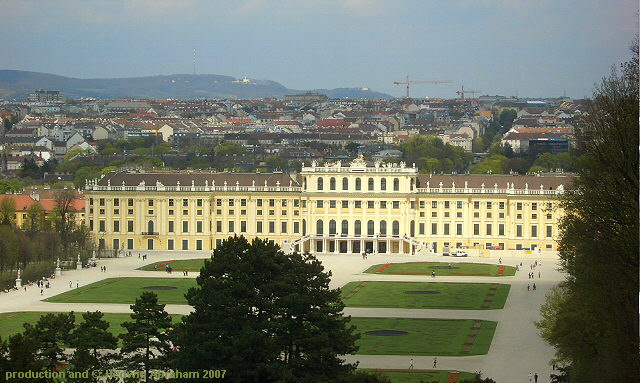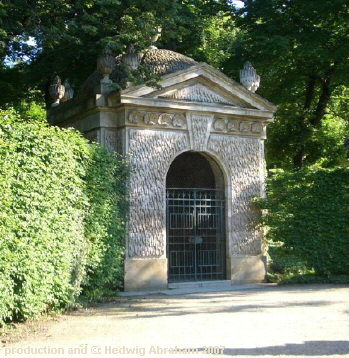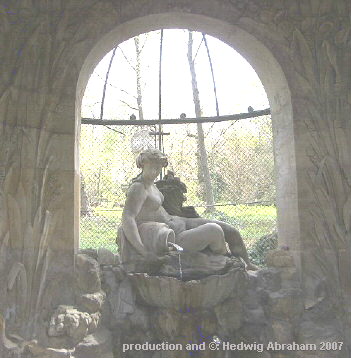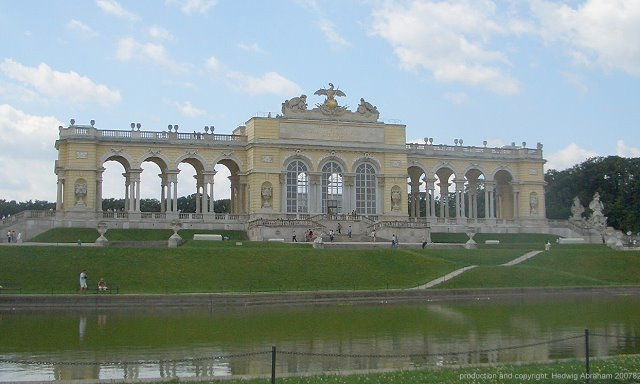
Schönbrunn - not only a palace The German language has, as many other languages, the speciality to put the determinating word in front and to stress it, if there are compound words. So it is called Eisenbahn, (railway), to make a difference to the Autobahn (motorway). Even the milkman is so distinguished from the postman. I think, you now understand, what I mean. Well, but then it should also be called Schönbrunn, in order to describe the beauty of that well. But it doesn't! It is called Schönbrunn. The reason for this is, of course, that in Vienna there are so many beautiful things, that it isn't necessary to stress the beauty, but rather the thing, that in every single case happens to be beautiful. But enough of the theory of language. If somebody says Schönbrunn today, most people think of the palace and maybe also the zoo - even if it logically enough was a well, that was the source of this denomination.
  The name is said to have arisen in the beginning of the 17th century, when Emperor Matthias found the well on one of his hunting tours. In 1642 the name was first mentioned in a written document. The old hunting-castle nearby was destroyed in 1683 during the second siege of Vienna by the Turks. But Emperor Joseph I charged Fischer von Erlach to build a new castle. Though it was first during the reign of Maria Theresa, that the castle became well-known, because she had some extensive renovations done and used it as the summer-residence of the Hapsburgs. That was a clear mark in the turning trend of Austrian orientation towards other countries. Maria Theresas father, Charles VI, still had had big plans for the monastery in Klosterneuburg, which he wanted to build according to the looks of the Spanish El Escorial. After his death Maria Theresa preferred the palace of Schönbrunn, which is much more inspired by the French Versailles. The Austrian palace has today not less than 1441 rooms. Nikolaus von Pacassi and later Johann Ferdinand Hetzendorf von Hohenberg were responsible for the rebuilding. The latter was also the architect of the Gloriette. The Gloriette is an arcaded building on the top of a hill, which signifies the end of the park of the palace. It has no other function than to be a catch for the eye. Though today there is a café installed, from which you have a nice sight over the palace and the city behind. All of the buildings are of course still plastered in "Emperor's yellow".
 Also the park is conceived after French example, the strict ornaments of the flowers and the cut trees in the alleys are a striking sight even in our days. in 1752 Franz Stephan von Lothringen, the spouse of Maria Theresa, let build the first zoo in the world in the vicinity of the palace. Already in 1778 the zoo was opened on sundays for the public at free(!) entrance. At the end of the 18th century there were bears, elephants and other exotic animals to be admired in the "imperial menagerie". Today the zoo is still a highlight for visitors. Another attraction with historical past is the "Palm Tree house" - pavilions with plants from all over the world and in the last decades even with free fluttering butterflies. If you consider now, that all of this belongs just to a summer-residence, then you will understand more easily, why it is called Schönbrunn in Vienna. 9.1.2010 by webmaster@werbeka.com |

